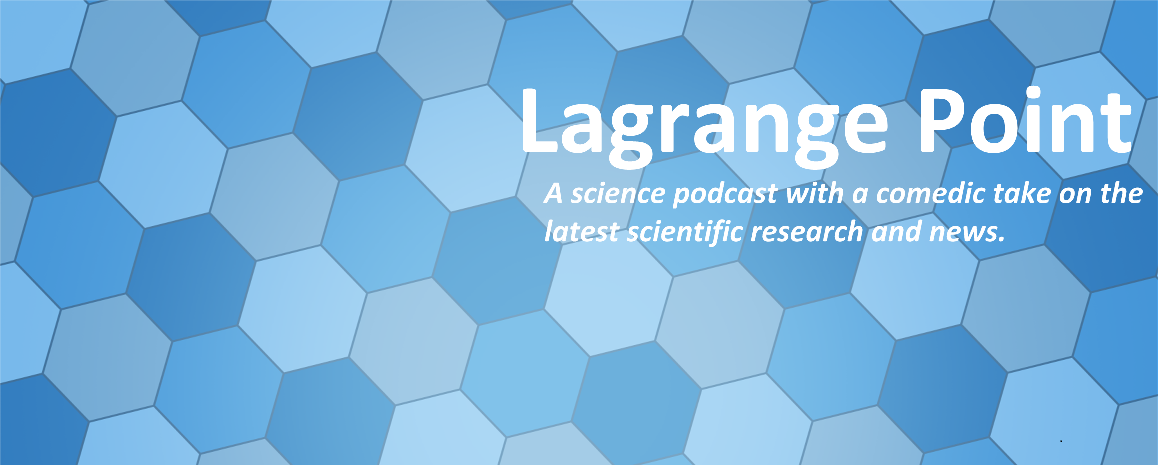Episodes

Monday Aug 31, 2020
Episode 394 - Travelling through time with telescopes
Monday Aug 31, 2020
Monday Aug 31, 2020
Telescopes can help us travel back in time to the early universe. We can watch galaxies form, the universe have a makeover and giant black holes appear. Using different telescopes we can learn about the cosmic dawn and the cosmic noon. The early universe was hazy and hard for light to travel far. What gave the early universe a makeover to allow starlight to travel? What fed the super hungry super massive black-holes of the early universe? Where did the early black holes find enough food to make them swell to massive sizes? What can we learn from the cosmic noon when most of the stars in the universe were formed?
- NASA/Goddard Space Flight Center. (2020, January 6). Astronomers spot distant galaxy group driving ancient cosmic makeover. ScienceDaily. Retrieved January 11, 2020 from www.sciencedaily.com/releases/2020/01/200106141610.htm
- Emanuele Paolo Farina, Fabrizio Arrigoni-Battaia, Tiago Costa, Fabian Walter, Joseph F. Hennawi, Alyssa B. Drake, Roberto Decarli, Thales A. Gutcke, Chiara Mazzucchelli, Marcel Neeleman, Iskren Georgiev, Anna-Christina Eilers, Frederick B. Davies, Eduardo Bañados, Xiaohui Fan, Masafusa Onoue, Jan-Torge Schindler, Bram P. Venemans, Feige Wang, Jinyi Yang, Sebastian Rabien, Lorenzo Busoni. The REQUIEM Survey. I. A Search for Extended Lyα Nebular Emission Around 31 z > 5.7 Quasars. The Astrophysical Journal, 2019; 887 (2): 196 DOI: 10.3847/1538-4357/ab5847
- T. Mauch et al. The 1.28 GHz MeerKAT DEEP2 Image. The Astrophysical Journal, 2019 [link]

Monday Aug 10, 2020
Episode 391 - Mysteries of the sun, stellar weather and magnetic fields
Monday Aug 10, 2020
Monday Aug 10, 2020
The sun contains many mysteries, which are hard to unravel without special space probes. Why is the sun's corona so much hotter than the sun's surface? What helps form the biggest solar flares? When two arches of the sun's magnetic fields meet it can create some dangerous flares. Solar storms and solar flares can destroy satellites, power grids and spaceships. How can we better predict stellar weather and avoid disaster? Mapping out the Suns magnetic field can help us better predict stellar weather.
- European Space Agency. (2020, July 16). Solar Orbiter's first images reveal 'campfires' on the Sun: ESA/NASA mission returns first data, snaps closest pictures of the Sun. ScienceDaily. Retrieved August 7, 2020 from www.sciencedaily.com/releases/2020/07/200716120652.htm
- Kanya Kusano, Tomoya Iju, Yumi Bamba, Satoshi Inoue. A physics-based method that can predict imminent large solar flares. Science, 2020; 369 (6503): 587 DOI: 10.1126/science.aaz2511

Monday Aug 03, 2020
Episode 390 - Cool fabrics, melting ice and recycling e-waste
Monday Aug 03, 2020
Monday Aug 03, 2020
From cool fabrics, to melting ice and recycling e-waste. How can a fabric let air through, but keep water out? Clothing that is breathable, water resistant and thermally efficient hits the sweet spot of a super fabric. Making clothes more efficient at cooling but also self cleaning can reduce our reliance on air conditioning. Using electricity and some polymers we can spin up some new cool clothing fabrics. Melting ice in your frozen over freezer can be made easier with biphillic materials. Materials that both hate and love water at the same time, can help melt ice and make heater exchangers more efficient. Recycling e-waste can be tricky, but what if we could use the by-products to make new, stronger coatings for steel? Turning e-waste into a steel boosting coating.
- Rumana Hossain, Veena Sahajwalla. Material Microsurgery: Selective Synthesis of Materials via High-Temperature Chemistry for Microrecycling of Electronic Waste. ACS Omega, 2020; 5 (28): 17062 DOI: 10.1021/acsomega.0c00485
- Xi Yu, Yang Li, Xianfeng Wang, Yang Si, Jianyong Yu, Bin Ding. Thermoconductive, Moisture-Permeable, and Superhydrophobic Nanofibrous Membranes with Interpenetrated Boron Nitride Network for Personal Cooling Fabrics. ACS Applied Materials & Interfaces, 2020; 12 (28): 32078 DOI: 10.1021/acsami.0c04486
- Yashraj Gurumukhi, Shreyas Chavan, Soumyadip Sett, Kalyan Boyina, Srivasupradha Ramesh, Peter Sokalski, Kirk Fortelka, Maury Lira, Deokgeun Park, Juo-Yun Chen, Shreyas Hegde, Nenad Miljkovic. Dynamic Defrosting on Superhydrophobic and Biphilic Surfaces. Matter, 2020; DOI: 10.1016/j.matt.2020.06.029

Monday Jul 27, 2020
Episode 389 - Chronic Pain, Ears, Long lasting Electrodes
Monday Jul 27, 2020
Monday Jul 27, 2020
Treating chronic pain through tiny electrodes in your ear. Can 3 phase like stimulating of nerves in your eye help treat chronic pain? Mapping out the inside of the ear in incredibly fine detail can help treat chronic pain. Fine tuning tiny electrodes inside the ear can help relieve chronic pain. Using a printer, tattoo paper and polymers to make long lasting electrodes. Flexible, thin and long lasting electrodes can make it easier to study the brain and the heart. Studying the brain over the long term just got easier with tattoo paper based electrodes.
- Babak Dabiri, Stefan Kampusch, Stefan H. Geyer, Van Hoang Le, Wolfgang J. Weninger, Jozsef Constantin Széles, Eugenijus Kaniusas. High-Resolution Episcopic Imaging for Visualization of Dermal Arteries and Nerves of the Auricular Cymba Conchae in Humans. Frontiers in Neuroanatomy, 2020; 14 DOI: 10.3389/fnana.2020.00022
- Laura M. Ferrari, Usein Ismailov, Jean-Michel Badier, Francesco Greco, Esma Ismailova. Conducting polymer tattoo electrodes in clinical electro- and magneto-encephalography. npj Flexible Electronics, 2020; 4 (1) DOI: 10.1038/s41528-020-0067-z

Monday Jul 20, 2020
Episode 388 - Cleaning, drinking and shaping water
Monday Jul 20, 2020
Monday Jul 20, 2020
Making water safe to drink, from evaporation to treatment. How do you simply evaporate water to make it safe? A piece of aluminium and a laser can hold the key to providing cheap and safe drinking water to the world. Pharmaceutical waste can build up in waster water, so how can it be treated? How can two little electrodes deal with the problem of pharmaceutical waste in water? Changing the course of a river can have huge consequences. What can we learn by studying the changes caused by the Panama Canal?
- Subhash C. Singh, Mohamed ElKabbash, Zilong Li, Xiaohan Li, Bhabesh Regmi, Matthew Madsen, Sohail A. Jalil, Zhibing Zhan, Jihua Zhang, Chunlei Guo. Solar-trackable super-wicking black metal panel for photothermal water sanitation. Nature Sustainability, 2020; DOI: 10.1038/s41893-020-0566-x
- Yassine Ouarda, Clément Trellu, Geoffroy Lesage, Matthieu Rivallin, Patrick Drogui, Marc Cretin. Electro-oxidation of secondary effluents from various wastewater plants for the removal of acetaminophen and dissolved organic matter. Science of The Total Environment, 2020; 738: 140352 DOI: 10.1016/j.scitotenv.2020.140352
- Jorge Salgado, María I. Vélez, Catalina González-Arango, Neil L. Rose, Handong Yang, Carme Huguet, Juan S. Camacho, Aaron O'Dea. A century of limnological evolution and interactive threats in the Panama Canal: Long-term assessments from a shallow basin. Science of The Total Environment, 2020; 729: 138444 DOI: 10.1016/j.scitotenv.2020.138444

Monday Jun 15, 2020
Episode 383 - Pulsars and fast radio bursts
Monday Jun 15, 2020
Monday Jun 15, 2020
From pulsars to fast radio bursts, we look at interstellar mysteries. Just how do Pulsars work? How long does it take for a Pulsar to be fed by surrounding matter? All that accretion disk matter spillaring around a Pulsar takes a long time to get there. What are Fast Radio Bursts? mysterious signals from deep space, or wobbly highly magnetised neutron stars? Magnetars, fast radio bursts and flares. What causes a fast radio burst in space to repeat?
- D R Lorimer, E F Keane, A Karastergiou, M Caleb, R P Breton, C G Bassa, D Agarwal, V Morello, B W Stappers, M B Mickaliger, K M Rajwade. Possible periodic activity in the repeating FRB 121102. Monthly Notices of the Royal Astronomical Society, 2020; 495 (4): 3551 DOI: 10.1093/mnras/staa1237
- Brian D Metzger, Ben Margalit, Lorenzo Sironi, Fast radio bursts as synchrotron maser emission from decelerating relativistic blast waves, Monthly Notices of the Royal Astronomical Society, Volume 485, Issue 3, May 2019, Pages 4091–4106, https://doi.org/10.1093/mnras/stz700
- Hall, S., & Quanta Magazine. (n.d.). A Surprise Discovery Points to the Source of Fast Radio Bursts. Retrieved June 13, 2020, from https://www.quantamagazine.org/a-surprise-discovery-shows-magnetars-create-fast-radio-bursts-20200611/
- Monash University. (2020, June 3). Astronomers capture a pulsar 'powering up'. ScienceDaily. Retrieved June 13, 2020 from www.sciencedaily.com/releases/2020/06/200603104549.htm
- A. J. Goodwin and D. M. Russell and D. K. Galloway et al, A 12 day delay between optical and X-ray activity during outburst rise in a low-mass X-ray binary, arXiv, astro-ph.HE, 2006.02872, 2020

Monday May 25, 2020
Episode 380 - New comets, touching an asteroid and the moon
Monday May 25, 2020
Monday May 25, 2020
New comets, touching down on an asteroid and fake diamonds on the moon. Small objects in our solar system can teach us about the early days of Earth. What happened on the moon 4.5 billion years ago to form cubic zirconia on the surface? What can we learn about the moon 4. billion years ago in dust brought back by Apollo 17? A new comet is appears for the end of May which you can see near sunrise. Another comet discovered by Michael Mattiazzo can be see near sunrise at the end of May. Touching down on an asteroid is an incredible feat, and the preliminary data from Hyabusa2 and Ryugu are fascinating.
- T. Morota, S. Sugita, Y. Cho, M. Kanamaru, E. Tatsumi, N. Sakatani, R. Honda, N. Hirata, H. Kikuchi, M. Yamada, Y. Yokota, S. Kameda, M. Matsuoka, H. Sawada, C. Honda, T. Kouyama, K. Ogawa, H. Suzuki, K. Yoshioka, M. Hayakawa, N. Hirata, M. Hirabayashi, H. Miyamoto, T. Michikami, T. Hiroi, R. Hemmi, O. S. Barnouin, C. M. Ernst, K. Kitazato, T. Nakamura, L. Riu, H. Senshu, H. Kobayashi, S. Sasaki, G. Komatsu, N. Tanabe, Y. Fujii, T. Irie, M. Suemitsu, N. Takaki, C. Sugimoto, K. Yumoto, M. Ishida, H. Kato, K. Moroi, D. Domingue, P. Michel, C. Pilorget, T. Iwata, M. Abe, M. Ohtake, Y. Nakauchi, K. Tsumura, H. Yabuta, Y. Ishihara, R. Noguchi, K. Matsumoto, A. Miura, N. Namiki, S. Tachibana, M. Arakawa, H. Ikeda, K. Wada, T. Mizuno, C. Hirose, S. Hosoda, O. Mori, T. Shimada, S. Soldini, R. Tsukizaki, H. Yano, M. Ozaki, H. Takeuchi, Y. Yamamoto, T. Okada, Y. Shimaki, K. Shirai, Y. Iijima, H. Noda, S. Kikuchi, T. Yamaguchi, N. Ogawa, G. Ono, Y. Mimasu, K. Yoshikawa, T. Takahashi, Y. Takei, A. Fujii, S. Nakazawa, F. Terui, S. Tanaka, M. Yoshikawa, T. Saiki, S. Watanabe, Y. Tsuda. Sample collection from asteroid (162173) Ryugu by Hayabusa2: Implications for surface evolution. Science, 2020; 368 (6491): 654 DOI: 10.1126/science.aaz6306
- NASA/Goddard Space Flight Center. (2020, May 13). New comet discovered by solar observatory. ScienceDaily. Retrieved May 23, 2020 from www.sciencedaily.com/releases/2020/05/200513135517.htm
- L. F. White, A. Černok, J. R. Darling, M. J. Whitehouse, K. H. Joy, C. Cayron, J. Dunlop, K. T. Tait, M. Anand. Evidence of extensive lunar crust formation in impact melt sheets 4,330 Myr ago. Nature Astronomy, 2020; DOI: 10.1038/s41550-020-1092-5

Monday May 11, 2020
Episode 378 - Maple Syrup Golden tongues and antioxidants
Monday May 11, 2020
Monday May 11, 2020
Taste testing maple syrup and long lasting antioxidants. How do you judge the taste of something as complex as maple syrup? How can a golden tongue help find gold, silver and bronze maple syrups? Antioxidants can keep food fresh and wounds safe, so how can they be made long lasting? Tannic acid often found in wines can make great antioxidants, but how to make their chemical effect long lasting? Fine woven meshes embedded with antioxidants can help flexible wrap food and wounds to keep them safe.
- Simon Forest, Trevor Théorêt, Julien Coutu, Jean-Francois Masson. A high-throughput plasmonic tongue using an aggregation assay and nonspecific interactions: classification of taste profiles in maple syrup. Analytical Methods, 2020; DOI: 10.1039/C9AY01942A
- Adwait Gaikwad, Hanna Hlushko, Parvin Karimineghlani, Victor Selin, Svetlana A. Sukhishvili. Hydrogen-Bonded, Mechanically Strong Nanofibers with Tunable Antioxidant Activity. ACS Applied Materials & Interfaces, 2020; 12 (9): 11026 DOI: 10.1021/acsami.9b23212

Monday May 04, 2020
Episode 377 - Hubble turns 30 and still takes amazing images
Monday May 04, 2020
Monday May 04, 2020
We celebrate the life and achievements of Hubble Space telescope and all that have worked on it over it's 30 years in space (and many more before that). We look at the challenges faced by Hubble early on, and the amazing science it is helping contribute to today. From stars being born, to comets tearing themselves apart Hubble sheds light on amazing science. The images Hubble takes are iconic and often look like science fiction. Hubble manages to celebrate it's birthday by capturing images of a comet tearing itself apart.
- Information@eso.org. (n.d.). Hubble Celebrates its 30th Anniversary with a Tapestry of Blazing Starbirth. Retrieved May 02, 2020, from https://www.spacetelescope.org/news/heic2007/
- ESA/Hubble Information Centre. (2020, April 28). Hubble captures breakup of comet ATLAS. ScienceDaily. Retrieved May 1, 2020 from www.sciencedaily.com/releases/2020/04/200428142410.htm

Monday Apr 20, 2020
Episode 375 - Solar Panels that work at night and on greenhouses
Monday Apr 20, 2020
Monday Apr 20, 2020
From solar panels on greenhouses to ones that work at night. How can you use radiant heat to make a solar panel work at night? Is there a way to harness energy from the sun even at night? Can you cover a greenhouse with solar panels without destroying your crops? What's the tipping point for harvesting solar energy for your greenhouse? Balancing the light needs of solar panels and of crops in a greenhouse. How does the photosynthesis process know which path to take? Shinning a light on the photosynthetic process.
- Tristan Deppe, Jeremy N. Munday. Nighttime Photovoltaic Cells: Electrical Power Generation by Optically Coupling with Deep Space. ACS Photonics, 2019; 7 (1): 1 DOI: 10.1021/acsphotonics.9b00679
- Eshwar Ravishankar, Ronald E. Booth, Carole Saravitz, Heike Sederoff, Harald W. Ade, Brendan T. O’Connor. Achieving Net Zero Energy Greenhouses by Integrating Semitransparent Organic Solar Cells. Joule, 2020; DOI: 10.1016/j.joule.2019.12.018
- Philip D. Laible, Deborah K. Hanson, James C. Buhrmaster, Gregory A. Tira, Kaitlyn M. Faries, Dewey Holten, Christine Kirmaier. Switching sides—Reengineered primary charge separation in the bacterial photosynthetic reaction center. Proceedings of the National Academy of Sciences, 2020; 117 (2): 865 DOI: 10.1073/pnas.1916119117

Monday Apr 13, 2020
Episode 374 - Lasers, Metal and Insect wings vs Bacteria
Monday Apr 13, 2020
Monday Apr 13, 2020
Taking the fight to bacteria with lasers, metal and insect wings. How can lasers help make a material into a bacteria destroyer? Metal in fantasy has demon slaying properties, but how can it help fight bacteria? What can we learn from insect wings to help make safer implants? What is it about silver that makes it good for killing bacteria (and werewolves). Why are metals so dangerous for bacteria? How can we treat and use metal to make medical devices safer from bacteria?
- Vidhya Selvamani, Amin Zareei, Ahmed Elkashif, Murali Kannan Maruthamuthu, Shirisha Chittiboyina, Davide Delisi, Zheng Li, Lirong Cai, Vilas G. Pol, Mohamed N. Seleem, Rahim Rahimi. Hierarchical Micro/Mesoporous Copper Structure with Enhanced Antimicrobial Property via Laser Surface Texturing. Advanced Materials Interfaces, 2020; 1901890 DOI: 10.1002/admi.201901890
- Asmaa A. Sadoon, Prabhat Khadka, Jack Freeland, Ravi Kumar Gundampati, Ryan H. Manso, Mason Ruiz, Venkata R. Krishnamurthi, Suresh Kumar Thallapuranam, Jingyi Chen, Yong Wang. Silver Ions Caused Faster Diffusive Dynamics of Histone-Like Nucleoid-Structuring Proteins in Live Bacteria. Applied and Environmental Microbiology, 2020; 86 (6) DOI: 10.1128/AEM.02479-19
- J. Jenkins, J. Mantell, C. Neal, A. Gholinia, P. Verkade, A. H. Nobbs, B. Su. Antibacterial effects of nanopillar surfaces are mediated by cell impedance, penetration and induction of oxidative stress. Nature Communications, 2020; 11 (1) DOI: 10.1038/s41467-020-15471-x

Monday Mar 30, 2020
Episode 372 - Flexible and wearable electronics
Monday Mar 30, 2020
Monday Mar 30, 2020
How can we make flexible electronics for our clothing? What does it take to make a screen that's flexible without relying on plastics? What aquatic by product can help make biodegradable, flexible electronics? Why do your towels go hard when you dry them in the sun? What happens on cotton fibres to make them stiffen up in the sun? How does fabric softener work - we're really not sure.
- Nara Kim, Samuel Lienemann, Ioannis Petsagkourakis, Desalegn Alemu Mengistie, Seyoung Kee, Thomas Ederth, Viktor Gueskine, Philippe Leclère, Roberto Lazzaroni, Xavier Crispin, Klas Tybrandt. Elastic conducting polymer composites in thermoelectric modules. Nature Communications, 2020; 11 (1) DOI: 10.1038/s41467-020-15135-w
- Xiaopan Zhang, Tengyang Ye, Xianghao Meng, Zhihui Tian, Lihua Pang, Yaojie Han, Hai Li, Gang Lu, Fei Xiu, Hai-Dong Yu, Juqing Liu, Wei Huang. Sustainable and Transparent Fish Gelatin Films for Flexible Electroluminescent Devices. ACS Nano, 2020; DOI: 10.1021/acsnano.9b09880
- Takako Igarashi, Masato Hoshi, Koichi Nakamura, Takeshi Kaharu, Ken-ichiro Murata. Direct Observation of Bound Water on Cotton Surfaces by Atomic Force Microscopy and Atomic Force Microscopy–Infrared Spectroscopy. The Journal of Physical Chemistry C, 2020; 124 (7): 4196 DOI: 10.1021/acs.jpcc.0c00423

Monday Mar 16, 2020
Episode 370 - Explosions in space and citizen science
Monday Mar 16, 2020
Monday Mar 16, 2020
From galactic explosions, and waiting for supernova space is full of mysteries. What happens when a super massive black hole in a massive galaxy cluster...erupts? A massive explosion shred a hole 15 times larger than the Milky Way. What is happening with Betelgeuse? Could Betelgeuse just have shed it's coat? Is Betelgeuse about to go 'nova or is something else happening? We find out about galactic research you can do from your couch. Tracing out a spiral is easy for humans to do, so why not help trace out a galaxy? Looking for something to do at home, why not citizen science helping trace galaxies?
References:
- S. Giacintucci, M. Markevitch, M. Johnston-Hollitt, D. R. Wik, Q. H. S. Wang, T. E. Clarke. Discovery of a giant radio fossil in the Ophiuchus galaxy cluster. The Astrophysical Journal, 2020 [link]
- Patrick Treuthardt, Ian B Hewitt. Comparison of galaxy spiral arm pitch angle measurements using manual and automated techniques. Monthly Notices of the Royal Astronomical Society, 2020; 493 (3): 3854 DOI: 10.1093/mnras/staa354
- Emily M. Levesque, Philip Massey. Betelgeuse Just Isn't That Cool: Effective Temperature Alone Cannot Explain the Recent Dimming of Betelgeuse. submitted to arXiv, 2020 [link]
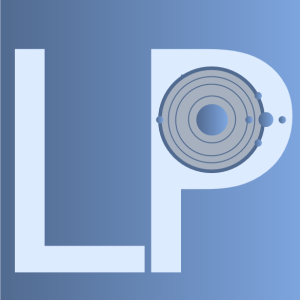
Monday Feb 24, 2020
Episode 367 - Sustainable and green Chemistry
Monday Feb 24, 2020
Monday Feb 24, 2020
Making chemistry green and sustainable, from cheaper catalyst to sorting solvents. How can you make catalysts cheaper and re-usable? Is there a cheaper catalyst to breakdown CO2? How can we make a circular carbon economy? Solvents play an important role in chemistry so how do you greenly find the right match? Green chemistry can be made more efficient using CO2.
- Youngdong Song, Ercan Ozdemir, Sreerangappa Ramesh, Aldiar Adishev, Saravanan Subramanian, Aadesh Harale, Mohammed Albuali, Bandar Abdullah Fadhel, Aqil Jamal, Dohyun Moon, Sun Hee Choi, Cafer T. Yavuz. Dry reforming of methane by stable Ni–Mo nanocatalysts on single-crystalline MgO. Science, 2020; 367 (6479): 777 DOI: 10.1126/science.aav2412
- Suyong Han, Keshav Raghuvanshi, Milad Abolhasani. Accelerated Material-Efficient Investigation of Switchable Hydrophilicity Solvents for Energy-Efficient Solvent Recovery. ACS Sustainable Chemistry & Engineering, 2020; DOI: 10.1021/acssuschemeng.9b07304

Monday Jan 13, 2020
Episode 361 - Fast Radio Bursts, Cosmic Rays and Antarctica
Monday Jan 13, 2020
Monday Jan 13, 2020
From Fast Radio Bursts to Cosmic rays, interstellar mystery solving is a team effort. Mysterious repeating signals from space are tricky to localize, like spotting a person on the moon from here on Earth. What can fast radio bursts from billions of light years away tell us about the nature of the universe? How do you hunt for the source of a mysterious radio burst billions of light years away? How does a tiger, a balloon and Antarctica help us understand Supernova? What's the best place to hunt for cosmic rays; floating above Antarctica with a Super Tiger.
- B. Marcote, K. Nimmo, J. W. T. Hessels, S. P. Tendulkar, C. G. Bassa, Z. Paragi, A. Keimpema, M. Bhardwaj, R. Karuppusamy, V. M. Kaspi, C. J. Law, D. Michilli, K. Aggarwal, B. Andersen, A. M. Archibald, K. Bandura, G. C. Bower, P. J. Boyle, C. Brar, S. Burke-Spolaor, B. J. Butler, T. Cassanelli, P. Chawla, P. Demorest, M. Dobbs, E. Fonseca, U. Giri, D. C. Good, K. Gourdji, A. Josephy, A. Yu. Kirichenko, F. Kirsten, T. L. Landecker, D. Lang, T. J. W. Lazio, D. Z. Li, H.-H. Lin, J. D. Linford, K. Masui, J. Mena-Parra, A. Naidu, C. Ng, C. Patel, U.-L. Pen, Z. Pleunis, M. Rafiei-Ravandi, M. Rahman, A. Renard, P. Scholz, S. R. Siegel, K. M. Smith, I. H. Stairs, K. Vanderlinde, A. V. Zwaniga. A repeating fast radio burst source localized to a nearby spiral galaxy. Nature, 2020; DOI: 10.1038/s41586-019-1866-z
- Ogliore, T. (2020, January 10). SuperTIGER on its second prowl -- 130,000 feet above Antarctica: The Source: Washington University in St. Louis. Retrieved from https://source.wustl.edu/2020/01/supertiger-on-its-second-prowl-130000-feet-above-antarctica/.

Monday Jan 06, 2020
Episode 360 - Imaging hard-working Cells keeping you alive during illness
Monday Jan 06, 2020
Monday Jan 06, 2020
How do we peer into the inner workings of our cells, especially during their response to a medical emergency? What role does fibroblasts play to protect your heart after a heart attack? When is your body hardest at work repairing damage after a heart attack? What stem cells control your blood cells? How can we get a picture of the complex 3D shape of blood stem cells in your bone marrow? What role does bone marrow play in blood regulation?
References:
- Chiara Baccin, Jude Al-Sabah, Lars Velten, Patrick M. Helbling, Florian Grünschläger, Pablo Hernández-Malmierca, César Nombela-Arrieta, Lars M. Steinmetz, Andreas Trumpp, Simon Haas. Combined single-cell and spatial transcriptomics reveal the molecular, cellular and spatial bone marrow niche organization. Nature Cell Biology, 2019; DOI: 10.1038/s41556-019-0439-6
- Zohreh Varasteh, Sarajo Mohanta, Stephanie Robu, Miriam Braeuer, Yuanfang Li, Negar Omidvari, Geoffrey Topping, Ting Sun, Stephan G. Nekolla, Antonia Richter, Christian Weber, Andreas Habenicht, Uwe A. Haberkorn, Wolfgang A. Weber. Molecular Imaging of Fibroblast Activity After Myocardial Infarction Using a 68Ga-Labeled Fibroblast Activation Protein Inhibitor, FAPI-04. Journal of Nuclear Medicine, 2019; 60 (12): 1743 DOI: 10.2967/jnumed.119.226993
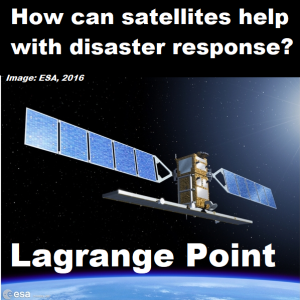
Monday Dec 02, 2019
Episode 355 - Satellites keeping us safe on the ground
Monday Dec 02, 2019
Monday Dec 02, 2019
Satellites can help save lives down on earth, by helping us better respond in disasters. When a flood, tsunami or other disaster strikes, satellites can help emergency responders get where they need to be as fast as possible. Satellites can track floods in near real time and help shave minutes of disaster response times. Finding your way in a flood or fire can be tricky, but satellites can help direct emergency responders. Satellites can help track critical infrastructure like bridges or roads as they age. When a bridge fails it can be a tragedy, but satellites can help give an early warning. When we dig big tunnels we can disturb structures and buildings, so how can we use satellites to avoid a disaster.
References:
- Perry C. Oddo, John D. Bolten. The Value of Near Real-Time Earth Observations for Improved Flood Disaster Response. Frontiers in Environmental Science, 2019; 7 DOI: 10.3389/fenvs.2019.00127
- Pietro Milillo, Giorgia Giardina, Daniele Perissin, Giovanni Milillo, Alessandro Coletta, Carlo Terranova. Pre-Collapse Space Geodetic Observations of Critical Infrastructure: The Morandi Bridge, Genoa, Italy. Remote Sensing, 2019; 11 (12): 1403 DOI: 10.3390/rs11121403
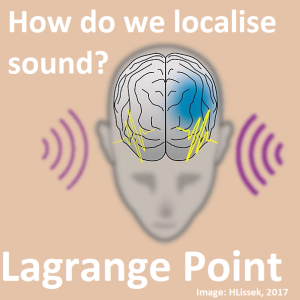
Monday Nov 11, 2019
Episode 352 - Figuring out where sound comes from and perceiving pitch
Monday Nov 11, 2019
Monday Nov 11, 2019
This week we look at the way our brains process sound, music, pitch and rhythm. How does our brain figure out where a sound is coming from? Do our eyes and ears process distance and location in a similar way? How does our brain discern differences in stimuli? What can we learn about pitch and rhythm from studying a remote Bolivian tribe? Is there a biological limit to our perception of sounds? Is our ability to perceive rhythm, chords and pitch cultural or biological?
References:
- Antje Ihlefeld, Nima Alamatsaz, Robert M Shapley. Population rate-coding predicts correctly that human sound localization depends on sound intensity. eLife, 2019; 8 DOI: 10.7554/eLife.47027
- Nori Jacoby, Eduardo A. Undurraga, Malinda J. McPherson, Joaquín Valdés, Tomás Ossandón, Josh H. McDermott. Universal and Non-universal Features of Musical Pitch Perception Revealed by Singing. Current Biology, 2019; DOI: 10.1016/j.cub.2019.08.020

Monday Oct 28, 2019
Episode 350 - Developing, tracking, recycling new materials
Monday Oct 28, 2019
Monday Oct 28, 2019
Smart phones, computers, televisions and even children's toys are part of what makes our modern world so exciting. But these often rely on plastics and rare earth metals which are hard to recycle. Are there efficient ways to capture all those rare earth metals? How are rare earth metals in old phones recycled today, and can we make it better? Knowing which bin to put plastic in is difficult, so what if there was a more universal way to recycle plastics? How does turning plastic into a gas with the help of steam help create a circular plastic economy? How can some steam power help crack plastics back into their most basic forms? Is it possible to recycle plastics without to build whole new plastic refineries? Regulation is often playing catch up to making materials safe. Are the latest generation of 'safe' fire retardants any safer than those that came before?
References:
Robert F. Higgins, Thibault Cheisson, Bren E. Cole, Brian C. Manor, Patrick J. Carroll, Eric J Schelter. Magnetic Field Directed Rare-Earth Separations. Angewandte Chemie International Edition, 2019; DOI: 10.1002/anie.201911606
Arlene Blum, Mamta Behl, Linda S. Birnbaum, Miriam L. Diamond, Allison Phillips, Veena Singla, Nisha S. Sipes, Heather M. Stapleton, Marta Venier. Organophosphate Ester Flame Retardants: Are They a Regrettable Substitution for Polybrominated Diphenyl Ethers? Environmental Science & Technology Letters, 2019; DOI: 10.1021/acs.estlett.9b00582
Henrik Thunman, Teresa Berdugo Vilches, Martin Seemann, Jelena Maric, Isabel Cañete Vela, Sébastien Pissot, Huong N.T. Nguyen. Circular use of plastics-transformation of existing petrochemical clusters into thermochemical recycling plants with 100% plastics recovery. Sustainable Materials and Technologies, 2019; 22: e00124 DOI: 10.1016/j.susmat.2019.e00124
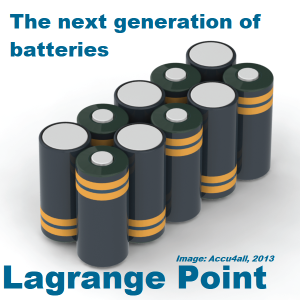
Monday Oct 14, 2019
Episode 348 - More efficient Lithium-Ion batteries and Organic Batteries
Monday Oct 14, 2019
Monday Oct 14, 2019
We launch from the Nobel Prize for Chemistry 2019 into current battery research and development. Creating the ubiquitous Lithium Ion battery took decades of collaborative research across the globe. How are scientists working together today to make the new generation of batteries? Can we improve LI batteries with new electrolyte mixes? How can we use Silicon instead of graphite in our batteries to give them a boost? Is it possible to make an organic recyclable battery? How can we use proteins and peptides to make organic batteries? Can we make batteries without damaging the environment?
References:
- Nobel Foundation. (2019, October 9). Nobel Prize in Chemistry 2019: Lithium-ion batteries. ScienceDaily. Retrieved October 11, 2019 from www.sciencedaily.com/releases/2019/10/191009082508.htm
- Binghong Han, Chen Liao, Fulya Dogan, Stephen E. Trask, Saul H. Lapidus, John T. Vaughey, Baris Key. Using Mixed Salt Electrolytes to Stabilize Silicon Anodes for Lithium-Ion Batteries via in Situ Formation of Li–M–Si Ternaries (M = Mg, Zn, Al, Ca). ACS Applied Materials & Interfaces, 2019; 11 (33): 29780 DOI: 10.1021/acsami.9b07270
- American Chemical Society. (2019, August 26). Producing protein batteries for safer, environmentally friendly power storage. ScienceDaily. Retrieved October 12, 2019 from www.sciencedaily.com/releases/2019/08/190826092322.htm5
